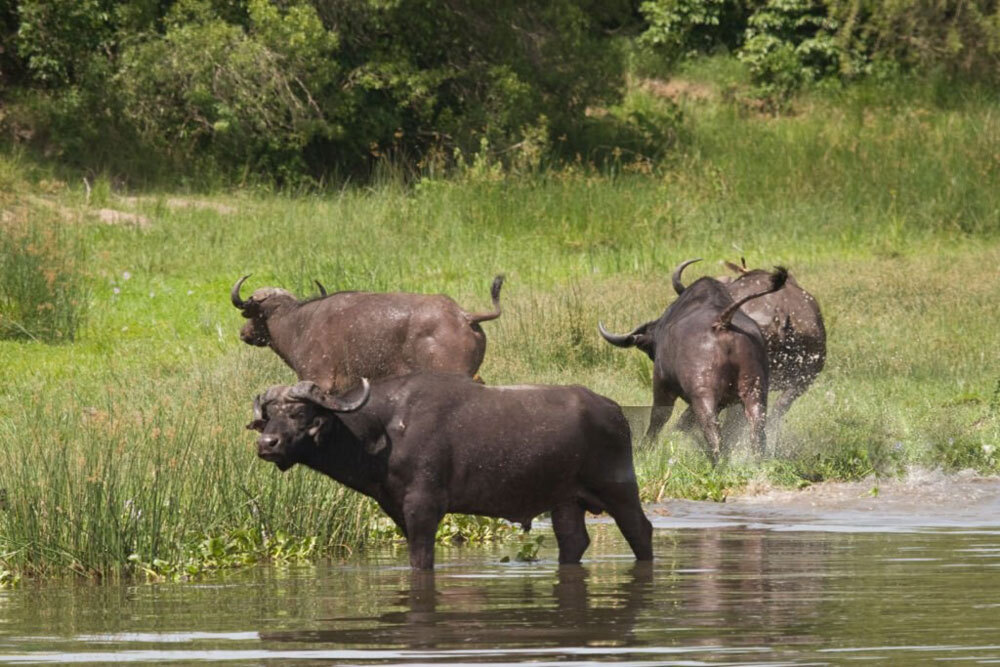The Nile buffalo (Syncerus caffer aequinoctialis) is a subspecies of African buffalo found in the savannahs of northern Uganda and South Sudan. Slightly smaller than the Cape buffalo, it has a more forward‑swept boss and a leaner build, yet retains the surly temperament and impressive horns that make buffalo such sought‑after trophies. Its rarity and the remote, scenic hunting grounds of the Karamoja region attract experienced hunters seeking a classic dangerous‑game experience.

In Uganda’s Karamoja region, buffalo hunts take place in open grassland dotted with acacia trees and distant hills. Hunters travel by vehicle to locate herds, using binoculars to evaluate bulls before dismounting for a deliberate stalk on foot. Shots are usually taken from 80 to 100 yards across broken terrain, and hunters must be prepared for longer shots when wary bulls hold up at distance. The best hunting occurs during the dry season when visibility is good and buffalo congregate near water holes, though outfitters may tailor timing around local weather patterns.
Nile buffalo populations around Karamoja number roughly 10,000 animals, and Uganda issues a small number of licences each season to ensure sustainability. Hunts are supervised by Uganda Wildlife Authority game rangers; quotas, minimum horn sizes and designated hunting blocks minimise impacts on breeding herds. Trophy fees and concession rentals support community projects and anti‑poaching patrols, providing incentives for local pastoralists to tolerate buffalo and other wildlife. Because Nile buffalo are part of the same species complex as the Cape and forest buffalo, careful management helps maintain genetic diversity across their range.
Nile buffalo are sometimes called “white‑eared buffalo” due to pale tufts at the tips of their ears. Mature bulls may weigh 1,200 – 1,500 pounds and display heavy bosses with tips that flare backward. Despite their smaller size compared with Cape buffalo, these animals are equally dangerous when wounded. Hunters often combine a buffalo hunt with visits to Kidepo Valley National Park or cultural tours to local Karamojong villages, adding a unique cultural dimension to the safari.
Nile Buffalo can be found in the following location:
Nile Buffalo has the following variations:
- (Varieties to be confirmed)
Start Your Adventure



